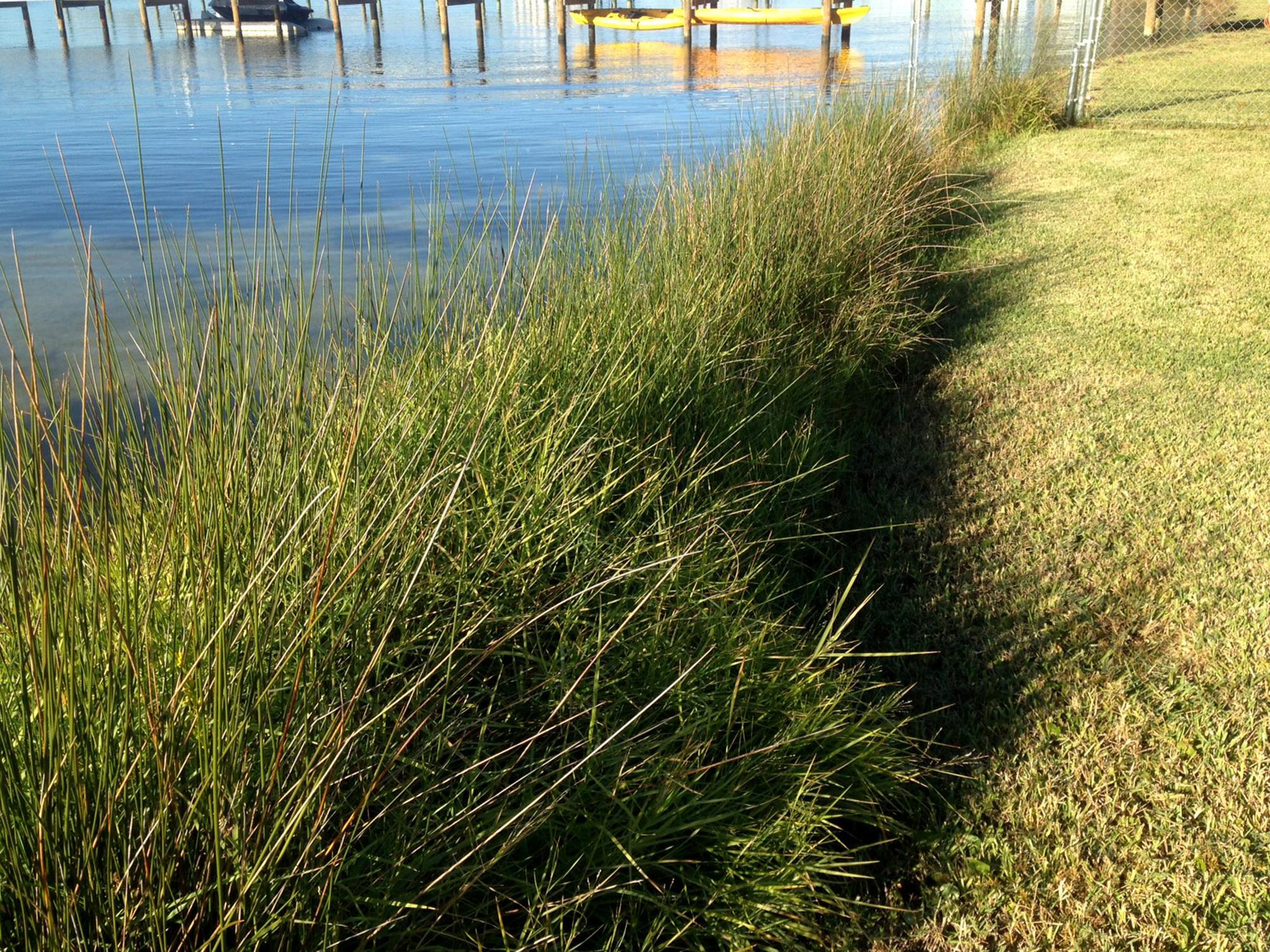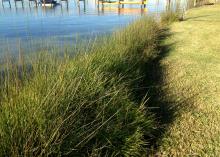Information Possibly Outdated
The information presented on this page was originally released on September 28, 2018. It may not be outdated, but please search our site for more current information. If you plan to quote or reference this information in a publication, please check with the Extension specialist or author before proceeding.
Salt marsh plants offer valuable shoreline service
BILOXI, Miss. -- Salt marshes are coastal wetlands common throughout the globe and visible just about any time you drive over a bridge along the coast.
They help ecosystems by improving water quality by filtering out pollution and providing habitat for commercially and recreationally important finfish and shellfish. Additionally, waterfront property owners value the erosion control and shoreline stabilization they provide. In fact, scientists have estimated conservatively that coastal marshes provide more than $20 billion worth of shoreline stabilization and storm protection services in the United States alone.
In coastal Mississippi and Alabama, the two most dominant salt marsh plants are black needlerush and smooth cordgrass. Both of these plants have extensive root systems that help keep them in place along bayou and bay shorelines with low to moderate wave energy. Frequent boat wakes can also increase wave energy and subsequent erosion in these areas.
The hardy roots essentially grab and hold sediment in place, which, in turn, slows down shoreline erosion. These plants also create a dense aboveground canopy of leaves and stems that helps reduce wave energy and helps capture sediment brought in with waves and tides.
Scientists demonstrated the resiliency of salt marshes in Breton Sound, Louisiana after hurricanes Katrina and Rita hit the area in 2005. They found salt marsh loss to be at least 20 times less than losses in surrounding ecosystems Considering all of these “services” that marshes provide, you can see how they can be used to stabilize shorelines and protect against storm damage.
Wave energy is the main driver behind shoreline erosion, and studies have shown that a salt marsh buffer of only 30 feet can reduce low to moderate wave energy by more than 50 percent. Therefore, the presence of a salt marsh in front of your property essentially reduces the impact of incoming waves on upland property by at least half. Add in the increased potential to trap more sediment and the other ecosystem services provided by marshes and you can see that salt marshes are a great tool for sustainably protecting shorelines.
Often, salt marshes need a little help and/or protection to get established in areas with moderate wave energy. One method to providing this protection is through living shoreline projects. If installed correctly and in appropriate areas, living shorelines function like a cheaper, more environmentally friendly and more resilient alternative to bulkheads.
The techniques used in living shorelines are extremely site specific, but most essentially involve the construction of a nearshore breakwater to help reduce wave energy before it hits the marsh. Depending on the site, these breakwaters can be made of temporary materials, such as biodegradable coir logs or short, board fences, or longer-term materials, such as loose stone, concrete structures or oyster shell cages. Temporary breakwaters are intended to persist long enough for plants to get established or rerooted. In higher wave energy environments, the more permanent breakwaters may be needed for sustained shoreline protection in conjunction with the shoreward salt marsh.
If you are interested in learning more, the Mississippi State University Extension Service and the Mississippi-Alabama Sea Grant offer living shorelines education workshops in Mississippi and Alabama once or twice a year. The majority of these workshops are focused on homeowners, but contractor workshops are planned for the near future.
If you want to be placed on the email list for future living shorelines workshops or have any questions, contact eric.sparks@msstate.edu or 228-546-1025.

Editor’s Note: Extension Outdoors is a column authored by several different experts in the Mississippi State University Extension Service.









